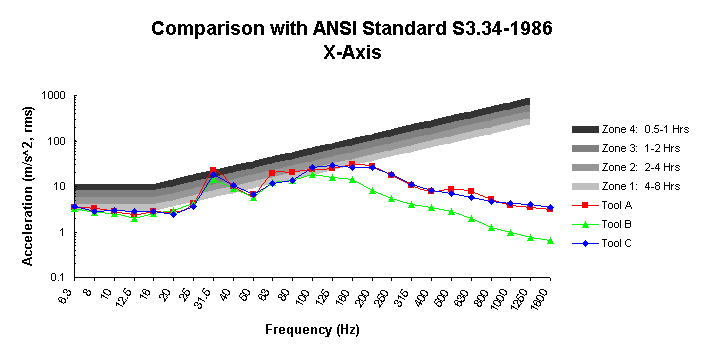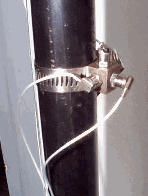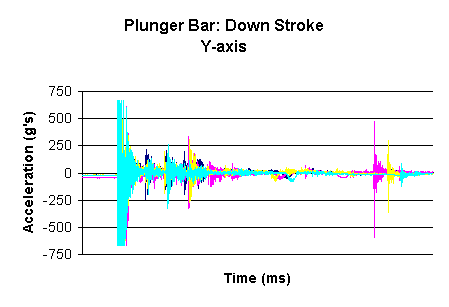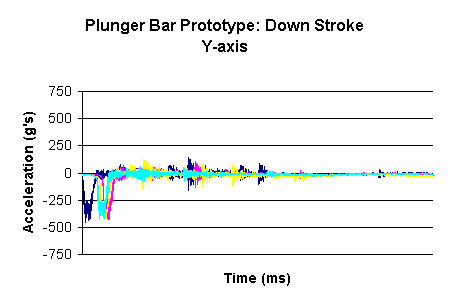
I. Vibration
Tool and/or anti-vibration glove testing
In order to identify the vibration spectral characteristics of power tools and/or damping characteristics of alternative anti-vibration gloves to quantify risk or implementation benefits, ETC performs objective vibration measurements. Measurement and evaluation is performed according to the following standards:
Vibration is measured using a tri-axial accelerometer configuration located on the handle of the tool or between the padding of the gloves and the hand. The following figure illustrates a previous glove test set-up.

Glove test set-up
Root-mean-square (rms) vibration is quantified for these axes in one-third octave band center frequencies of 6.3Hz - 1600Hz. Primary axis vibration (e.g., axis resulting in compression of the hand) is used to form the comparative basis. Tools or gloves are compared by:
An example of vibration spectral data plotted against ANSI S3.34-1986 exposure zones is provided below. The four exposure zones illustrate recommended vibrations levels for regular daily hand-arm vibration exposure. Exposure is the actual time vibration is imposed on the hand, not work hours. Generally, the highest center band vibration within the exposure zones should limit vibration exposure.

The figure shows Tool "B" resulted in an increased recommended exposure time as compared to Tools "A" and "C", as indicated by the 31.5Hz center frequency. Tool "B" resulted in a lower overall acceleration value, thereby, reducing the risk potential of hand-arm vibration adverse health effects.
Vibration impact or shock tool testing
Vibration impact or shock tool testing is performed to quantify impact or handle vibration levels imposed on the user. Vibration is quantified in three directions using handle-mounted accelerometers located near the grasp of the user.

Handle mounted accelerometer configuration
Root-mean-square (rms) vibration values are calculated and form the basis for comparison. The rms value is a direct measure of the energy content of the vibration. The figures below illustrate four strikes of a striking tool and a reduced impact prototype of the tool.
Tool A

Prototype
